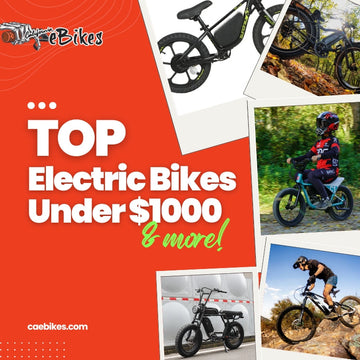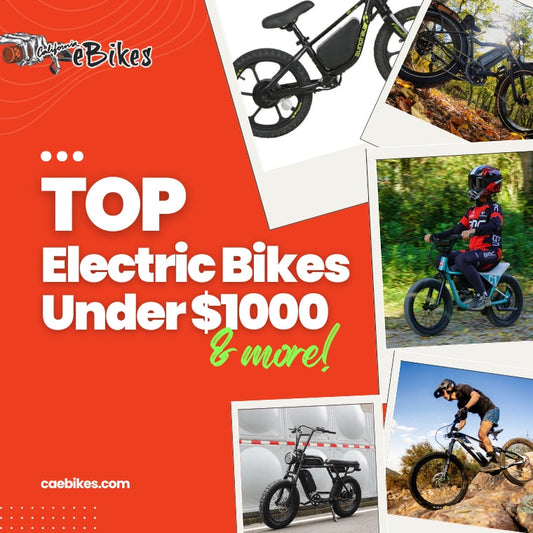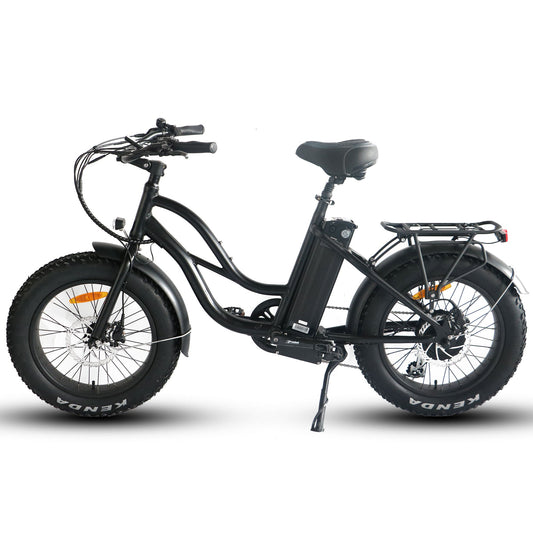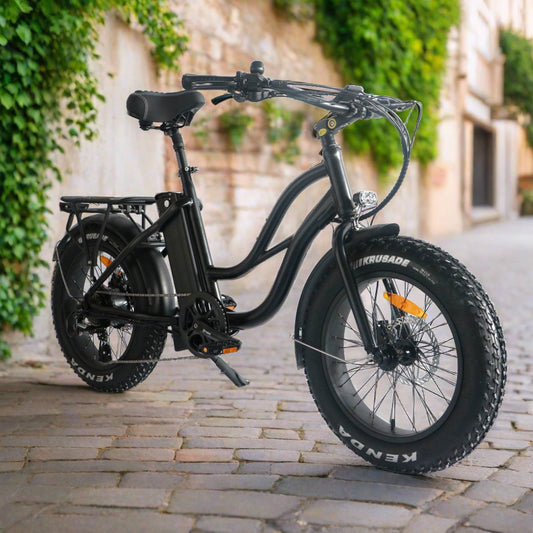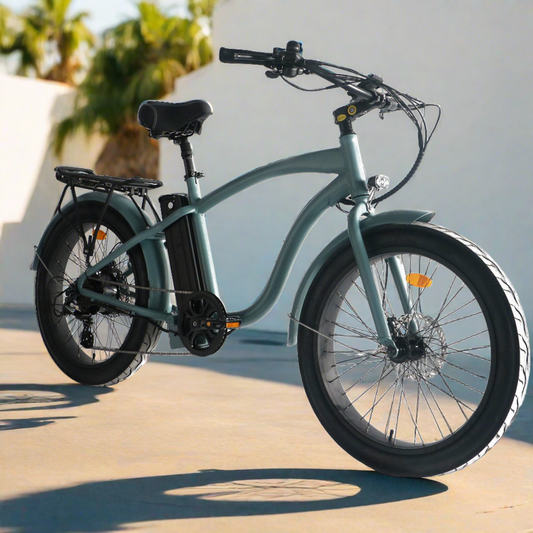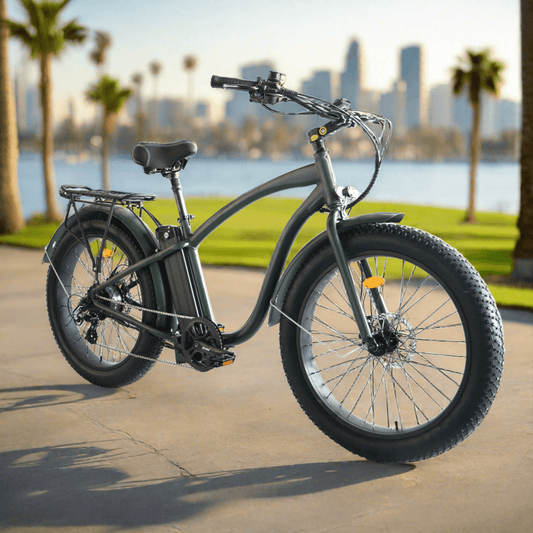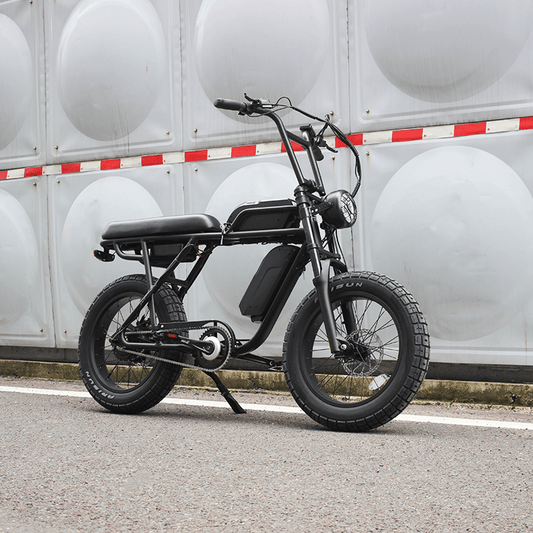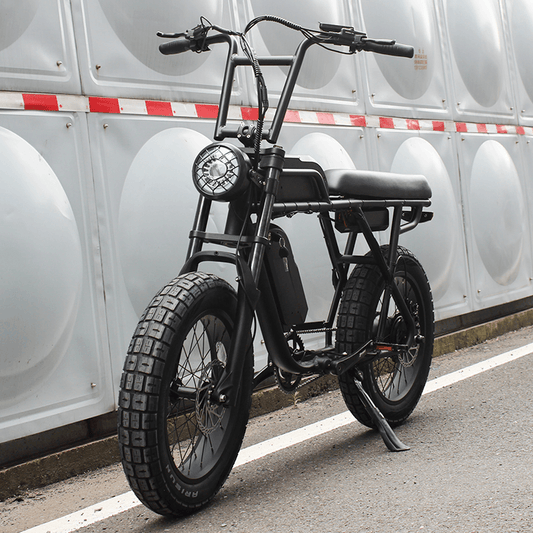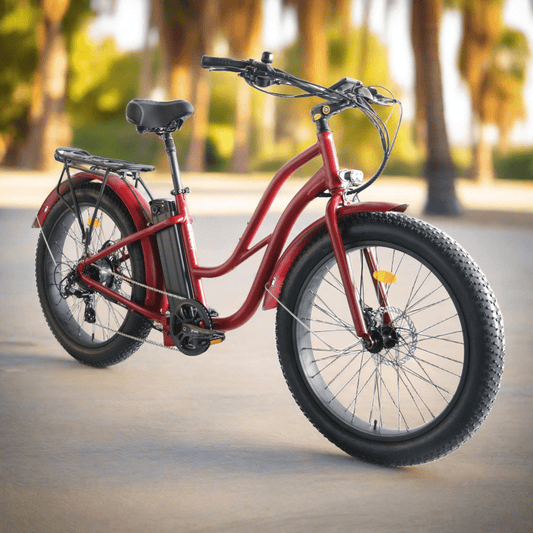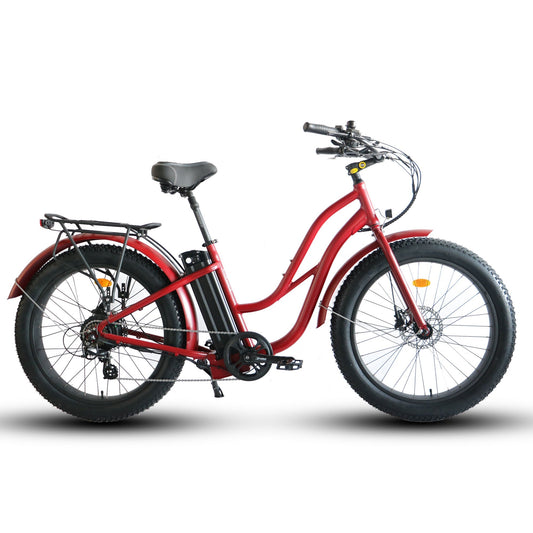Electric Bike FAQ Hub: Your Top 10 E-Bike Questions Answered
Welcome to California Electric Bikes' comprehensive guide to the most frequently asked electric bike questions. Whether you're a new rider or a seasoned enthusiast, this hub has the info you need—clearly explained and tailored for California riders.

General E-Bike Knowledge
1. What is an electric bike, and how does it work?
An electric bike (e-bike) is a bicycle with a built-in electric motor powered by a rechargeable battery. It assists your pedaling for easier riding. E-bikes come in three classes: Class 1 (pedal assist, max 20 mph), Class 2 (throttle assist, max 20 mph), and Class 3 (pedal assist, max 28 mph).
2. How far can an electric bike go on one charge?
Most e-bikes offer a range of 25 to 70 miles per charge depending on battery capacity, terrain, and assist level. For example, the Himiway Cruiser Step-Thru can go up to 60 miles on a single charge.
Legal and Local Questions
3. Do I need a license or registration to ride an e-bike in California?
No license, registration, or insurance is required for Class 1 or 2 e-bikes. For Class 3 bikes, riders must be 16 or older and wear a helmet, but still don’t need a license or registration.
4. Are there age restrictions for riding an e-bike in California?
Yes. Riders must be at least 16 years old to operate Class 3 e-bikes. There are no age restrictions for Class 1 or 2, though helmet use is strongly encouraged for all riders.
Maintenance and Care
5. What maintenance does an e-bike require?
Basic e-bike upkeep includes charging and storing the battery properly, checking tire pressure, cleaning and lubricating the chain, and inspecting the brakes. California Electric Bikes offers service and repairs with pickup and delivery available.
6. How do I store my e-bike battery properly?
Store your battery in a dry, room-temperature environment and charge it regularly. Avoid extreme heat, freezing temperatures, and moisture. Bikes like the Velotric Discover 1 Step-Thru have removable batteries for easier indoor charging.
Usage Tips
7. Can I ride an electric bike in the rain or on trails?
Most e-bikes are water-resistant and can be ridden in light rain. Avoid deep water or washing the bike with high-pressure hoses. Many trails allow Class 1 e-bikes, but local rules vary—always check signage or regulations before riding off-road.
8. How do I maximize the range of my e-bike?
Use eco or low assist modes, avoid rapid starts, keep tires properly inflated, and minimize cargo weight. Routine maintenance also helps maintain top battery performance.
Product-Specific Questions
9. What is the difference between hub-drive and mid-drive motors?
Hub-drive motors are built into the wheel and operate independently from the bike’s gears. Mid-drive motors are located at the crank and provide better hill climbing and a natural feel. For example, the Freesky Rocky Step-Thru features a mid-drive setup for off-road and trail versatility.
10. Are folding e-bikes a good option for commuters?
Yes! Folding e-bikes are compact and ideal for small living spaces or commuting. The Coastal Cruiser CC Folding Step-Thru combines portability with a powerful 750W motor—perfect for everyday riders.
Looking for the right model? Explore our full collection of step-through electric bikes at California Electric Bikes.



